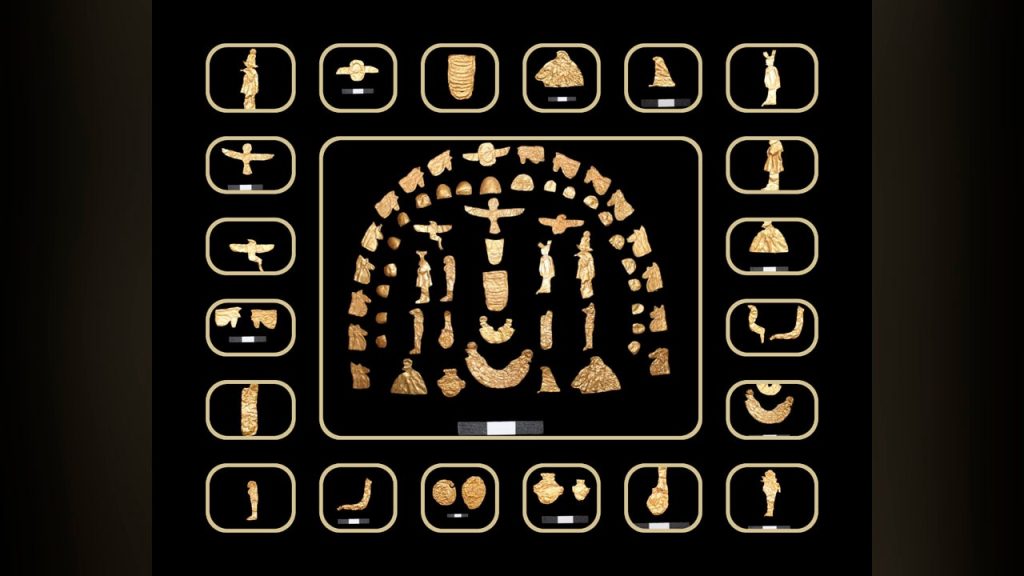Excavations in the Nile Delta have recently revealed a treasure trove of ancient Egyptian artifacts dating back nearly 2,500 years. The artifacts, which include bronze coins, pottery, gold pieces, and jewelry from Egypt’s Late and Ptolemaic periods, were uncovered by an Egyptian archaeological mission at the Tell al-Deir necropolis in Damietta. Among the items discovered were statues, funerary amulets, and a pottery vessel containing 38 bronze coins dating back to the Ptolemaic period, which was Egypt’s last dynasty before it became part of the Roman Empire. The Ptolemaic dynasty, founded around 300 B.C. after Alexander the Great of Macedonia conquered Egypt, saw leadership passed down through descendants before ending with Cleopatra.
In 2018, Egypt exhibited artifacts from the Ptolemaic period for the first time at the Egyptian Museum in Cairo, displaying around 300 artifacts for the public to see. The latest findings from the Tell al-Deir necropolis are currently being restored and classified by experts. The excavation of these tombs sheds light on the rich history of ancient Egypt and its interactions with the wider Mediterranean world during the Late and Ptolemaic periods. The artifacts uncovered provide valuable insights into the material culture and burial practices of the time, allowing archaeologists to piece together a more complete picture of ancient Egyptian society and its connections to neighboring civilizations.
The discovery of these ancient artifacts also highlights the significance of the Ptolemaic period in Egyptian history, as it represents a transitional period between indigenous Egyptian rule and foreign conquest by the Roman Empire. The Ptolemaic dynasty, established by one of Alexander the Great’s generals, Ptolemy I, held power for several centuries before being absorbed into the Roman Empire. The artifacts found in the tombs of the Tell al-Deir necropolis offer a glimpse into the material wealth and artistic achievements of this period, providing evidence of the cultural and economic exchanges that took place between Egypt and other Mediterranean societies during this time.
The excavation of these tombs in Damietta has added to our understanding of ancient Egyptian burial practices and funerary rituals, as well as the religious beliefs and customs of the time. The discovery of statues, funerary amulets, and pottery vessels containing offerings for the deceased helps archaeologists reconstruct the mortuary practices of the Late and Ptolemaic periods, shedding light on how the ancient Egyptians viewed death, the afterlife, and the role of funerary objects in ensuring a successful passage into the next world. These artifacts also offer clues about the social status and identity of the individuals buried in these tombs, providing insights into their lives and relationships within ancient Egyptian society.
As the Ministry of Tourism and Antiquities continues to investigate and document the artifacts unearthed at the Tell al-Deir necropolis, further insights into the history and culture of ancient Egypt during the Late and Ptolemaic periods will be gained. The meticulous restoration and classification of these artifacts by experts will help preserve these treasures for future generations and contribute to our understanding of the complex and fascinating civilization that thrived along the Nile River thousands of years ago. Through the discovery and study of these ancient artifacts, we are able to piece together a more complete narrative of Egypt’s rich and diverse heritage, connecting us to the past and inspiring continued exploration and discovery in the field of archaeology.


